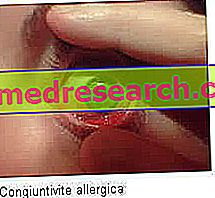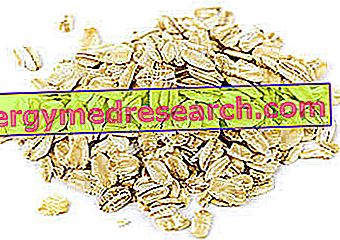Generality
Chronic lichen simplex is a skin inflammation that occurs following repeated rubbing, scratching and mechanical trauma.

This disease is characterized by an intense itchy sensation that, in the long run, causes skin alterations, such as dryness, flaking, discoloration and plaques. Through physiopathological mechanisms not yet fully known, the act of scratching triggers a greater itching, helping to maintain a vicious itch-scratching-itching circle. Over time, the continuous scratching that self-maintains the disorder leads to thickening of the skin involved in the affected areas (lichenification).
In chronic lichen simplex, the initial stimulus to scratching may be the consequence of an underlying dermatosis (such as, for example, atopy, contact dermatitis or parasitic infestation) or other conditions, including psychological stress and anxiety disorders . In some cases, however, chronic lichen simplex manifests itself without apparent causes .
The management of the disorder consists in the adoption of some behavioral measures aimed at resisting the urge to scratch and in the prevention of trigger factors (eg nervous situations, atopy, etc.), in combination with systemic and / or topical drug therapy . Corticosteroids and antihistamines usually help control the itching.
What's this
Lichen Simplex Chronic: what is it?
Chronic lichen simplex is a skin disease characterized by intense itching, aggravated by the urge to scratch repeatedly .
The manifestations of the disorder affect easily accessible body districts; the most affected skin areas are: arms, neck, legs, back, chest, scalp and ano-genital region.
Chronic Simplex Lichen: terminology and synonyms
In the scientific literature, chronic lichen simplex is indicated with multiple synonyms, of which the best known are:
- Vidal's neurodermatitis (or Vidal's disease, from the name of the French dermatologist who first described the condition);
- Neurodermatitis ;
- Circumscribed neurodermatitis .
Causes and Risk Factors
Lichen simplex is a dermatological disease sustained by a chronic inflammation of the superficial layer of the skin, from which results an intense itchy sensation which, in turn, induces scratching and causes further itching . A vicious circle is thus established.
What are the causes of Chronic Lichen Simplex?
Chronic lichen simplex is not a primary pathological process : in some cases, it depends on a dermatosis that maintains the inflammatory state from which itching follows; at other times, it results from other conditions, such as nervousness, stress and anxiety disorders . Scratching at the origin of chronic lichen simplex can begin even for no apparent reason .
In many cases, the patient continues to scratch for a long time, even after the triggering condition disappears.
Chronic Simplex Lichen: pathophysiological mechanism
The pathophysiological mechanism underlying chronic lichen simplex is still not entirely clear. However, it is known that this disorder involves a series of alterations that influence the way in which the nervous system perceives and processes the itchy sensations . Among the possible causes there would be a reduction in the threshold of activation of cutaneous nociceptors, with hypersensitivity of skin and mucous membranes, in a similar way to what happens in allodinias .
Chronic lichen simplex does not appear to be allergic in nature.
Chronic Lichen Simplex: aggravating and predisposing factors
Chronic lichen simplex can occur at any age, but it mainly affects people in the 20 to 50 age group. The disease can affect both sexes.
SKIN DISEASES
The skin that tends to eczematous conditions (as in the case, for example, of atopic dermatitis ) is more prone to lichenification.
In addition to atopy, many other itchy dermatological diseases can predispose to the onset of chronic lichen simplex. These include:
- Seborrheic dermatitis (when the scalp is involved);
- Some forms of psoriasis;
- Mycosis;
- Contact dermatitis;
- Stasis dermatitis;
- Sclerosus Lichen;
- Balanoposthitis.
PSYCHOSOMATIC DISORDERS
Some psychological factors seem to play a role in the onset of chronic lichen simplex. In particular, the disorder tends to manifest itself in subjects suffering from anxiety, episodes of nervousness and non-specific emotional stress .
According to some scientific sources, chronic lichen simplex could have a psychosomatic origin : it seems that some people are more prone to itching as a response to emotional tensions, so they may be more vulnerable to the vicious circle that causes them to continually scratch themselves.
Furthermore, chronic lichen simplex is often associated with depression and other psychiatric disorders .
Symptoms and Complications
How does the Chronic Lichen Simplex manifest itself?
In the early stages of chronic lichen simplex, the skin appears normal for observation, but the itching is intense. Subsequently, dryness and flaking appear. The repeated scratching and rubbing lead to thickening of the area in the form of dark colored melanin stains (skin dyschromia) and lichenified plaques .
Many people give in to the urge to scratch during the day, but may not be as aware of this habit in sleep.
Chronic lichen simplex can also cause burning, heat and tingling (similar to the sensation of a pin prick).
Chronic Simplex Lichen: characteristic lesions
The main sign of chronic lichen simplex are lichenified, hyperpigmented, dry and itchy skin plaques. These lesions have an irregular shape, oval or roundish.
A fully formed chronic lichen simplex plaque consists of:
- An external area of bounded papules of brownish color;
- A central area of confluent scales-covered lesions.
Seat of injuries
Chronic lichen simplex can occur anywhere on the body, but, in most cases, the lesions are located in areas of the skin that are easily accessible, such as:
- Scalp;
- Neck;
- Subscapular region;
- pube;
- Legs;
- Arms;
- Upper chest;
- Back.
Chronic lichen simplex can also occur at the genital level (anus, vulva, vagina and scrotum).
Possible complications of Chronic Lichen Simplex
- Scratching that self-maintains chronic lichen simplex can cause wounds, bacterial infections, permanent scars and changes in skin color (skin discoloration).
- The itching of chronic lichen simplex can affect sleep, sexual function and quality of life in general.
Diagnosis
Chronic Lichen Simplex: how is it diagnosed?
The diagnosis of chronic lichen simplex is based on an objective examination and analysis of risk factors during the history .
During the diagnostic procedure, the specialist doctor can carry out a series of investigations, to try to trace the cause responsible for the initial itching or to exclude other dermatological pathologies that have a similar presentation.
In the case of anal or vaginal itching, for example, it is necessary to perform tests to look for or exclude other possible causes, including:
- pinworms;
- trichomoniasis;
- Scabies;
- Lichen planus;
- Skin sarcoidosis;
- Hemorrhoids;
- Mycotic infections;
- Genital warts or warts;
- Contact dermatitis;
- Psoriasis.
On histological examination, the affected skin of chronic lichen simplex has acanthosis, hyperkeratosis and parakeratosis.
Chronic Simplex Lichen: differential diagnosis
The differential diagnosis of chronic lichen simplex must be made with similarly presenting diseases, including:
- Tinea corporis;
- Lichen planus;
- Psoriasis.
Chronic lichen simplex can be distinguished from these pathological conditions by:
- Analysis of skin scarifications in a fresh preparation with potassium hydroxide;
- Skin biopsy.

Treatment and Remedies
Chronic lichen simplex is not an easily manageable condition, since it is necessary to act on several fronts, with a therapeutic protocol that often requires several months. Therefore, the patient's cooperation and adherence to the doctor's instructions are essential for the successful outcome of the treatment.
In general, therapy varies according to the location, morphology and extent of the lesions. For example, capsaicin-based creams can be useful in some areas, such as the scapular one, but the burning sensation can make the application unacceptable for the anogenital region. Vulvar lichen simplex lesions are more commonly treated with a mild topical corticosteroid or a topical calcineurin inhibitor.
The treatment of chronic lichen simplex also involves the management of underlying pathologies (such as atopic dermatitis) and of factors that can aggravate the problem or cause relapses. These include: extreme temperatures, mental stress, allergens and exposure to skin irritants.
Drugs and other therapeutic interventions
The treatment of chronic lichen simplex is intended to reduce itching and minimize existing lesions.
The correct therapeutic approach requires, first of all, that the doctor:
- Tell the patient about the effects of scratching and rubbing over time;
- Provide the tools and behavioral techniques to resist the pruritic stimulus and stop scratching.
The secondary treatment of chronic lichen simplex usually involves the use of topical corticosteroids (such as triamcinolone acetonide and fluocinonide) in cycles of about 3-4 weeks. In addition to reducing inflammation and itching, these drugs help soften the hyperkeratosis.
When chronic lichen simplex involves small areas, the administration of corticosteroids by local infiltration is possible.
With regard to large and more symptomatic lesions, on the other hand, the drug can be administered by occlusion with a sterile gauze.
A more extensive chronic lichen simplex is more likely to require systemic treatment or total phototherapy .
In patients who are refractory to corticosteroids or those with lesions on thin skin (vulva, scrotum, armpit and face), the use of topical immunomodulators, such as tacrolimus and pimecrolimus, may be indicated.
In some cases, to alleviate the itching of chronic lichen simplex can be useful:
- Oral antihistamine H1 (or H1 antagonist) receptor antagonists;
- Emollients of the skin;
- Doxepin-based cream;
- Capsaicin based cream.
In the case of superinfection of chronic lichen simplex lesions, the doctor may indicate the intake of a topical or oral antibiotic.
To remember
Chronic lichen simplex worsens or improves depending on the ability to stop scratching.



